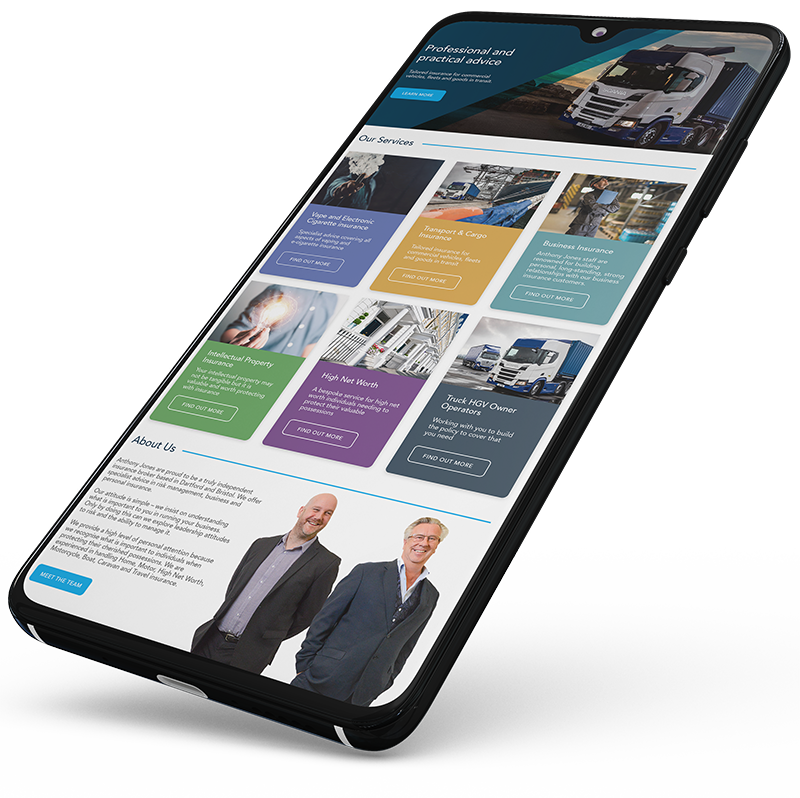Managing driver behaviour is one of the key aspects of fleet management.
In this post we’ll discuss the business case for improving driver behaviour in your fleet through exploring the costs associated with poor driver behaviour. We will then share a number of strategies that can help you improve driver behaviour in your fleet.
Get The Right Insurance Cover For Your Fleet
Improving driver behaviour won’t just make your fleet more cost-effective and fuel efficient. It will also make it significantly safer. Working towards a culture of fleet safety can be an essential part of your ongoing risk management.
Your broker should be playing an active part in representing to insurers your attitude to risk management. Gone are the days when you could just provide a list of vehicles and a claims experience, and insurers would rush towards offering a price. No one rushes towards a fleet buyer unless there are good reasons. At Anthony Jones, we are very persuasive with insurers where we can differentiate attitudes of buyers. Make sure you can put your business at the top of the pile
For more information on how we can help you and your fleet, get in touch with us on 020 8290 9099 or email us at commercial.motor@anthonyjones.com.
What Is Considered Poor Driver Behaviour for Fleets
When we talk about poor driver behaviour, we’re talking about:
- Excessive speeding and “aggressive” driving.
- Idling in traffic.
- Harsh braking and accelerating.
- Misuse of tachographs and other reporting systems.
How Much Does Poor Driver Behaviour Cost Fleets?
Any poor driver behaviour can cost your business. A lot of driver behaviour over a long period of time can result in significant costs:
- Idling in traffic wastes fuel. One study found that just one minute of idling can cause an HGV to consume up to 21.7g of fuel, amounting to about 3p per minute in fuel. Over the course of six months, this could amount to over £348 of wasted fuel, per truck. Just from idling!
- Speeding and “aggressive” driving can increase a vehicle’s fuel consumption. When so many fleets are struggling with rising fuel costs, any driver behaviour that burns more fuel than necessary should be addressed as soon as possible.
- Harsh braking and accelerating can put undue strain on a vehicle’s engine, brakes, and tyres. This can increase your maintenance costs.
- Failure to comply with tachographs and other reporting systems can result in serious fines. You could be looking at a maximum fine of £2,500 per infringement.
5 Ways Fleets Can Improve Driver Behaviour
- Get everyone involved. You will need support and buy-in from senior management if you want to make any lasting changes to driver behaviour, as you may need their authorisation to invest in new training and technology. You can easily use some of the expenses we outlined above to make the business case for driver improvement.
- Establish your baselines and set your targets. Use driver monitoring technology to get baseline figures for things like revving, idling, fuel consumption, acceleration, and braking. Set your targets based on these figures. Once you know exactly what you want to achieve, you should find it easier to get buy-in at all levels.
- Talk to your drivers. Tell them exactly what you want to improve, and why. Make it clear that this isn’t a witch-hunt, and that your aim is to improve driving standards across the whole fleet. Focus on the benefits of safer, smoother, and more efficient driving, rather than the risks and costs of poor driving.
- Invest in driver training. All HGV drivers already have to commit to ongoing training. Yet telematics can help you identify any areas where drivers in your fleet might benefit from extra training, whether that’s braking, handling, idling, or something else entirely.
- Offer incentives. Rather than punishing any drivers who exhibit poor behaviour, why not reward any drivers who show an improvement? There could be extra leave, or pay bonuses, for whichever driver makes the biggest saving in fuel costs, for example.
For more information on how we can help you and your fleet, get in touch with us on 020 8290 9099 or email us at commercial.motor@anthonyjones.com.


